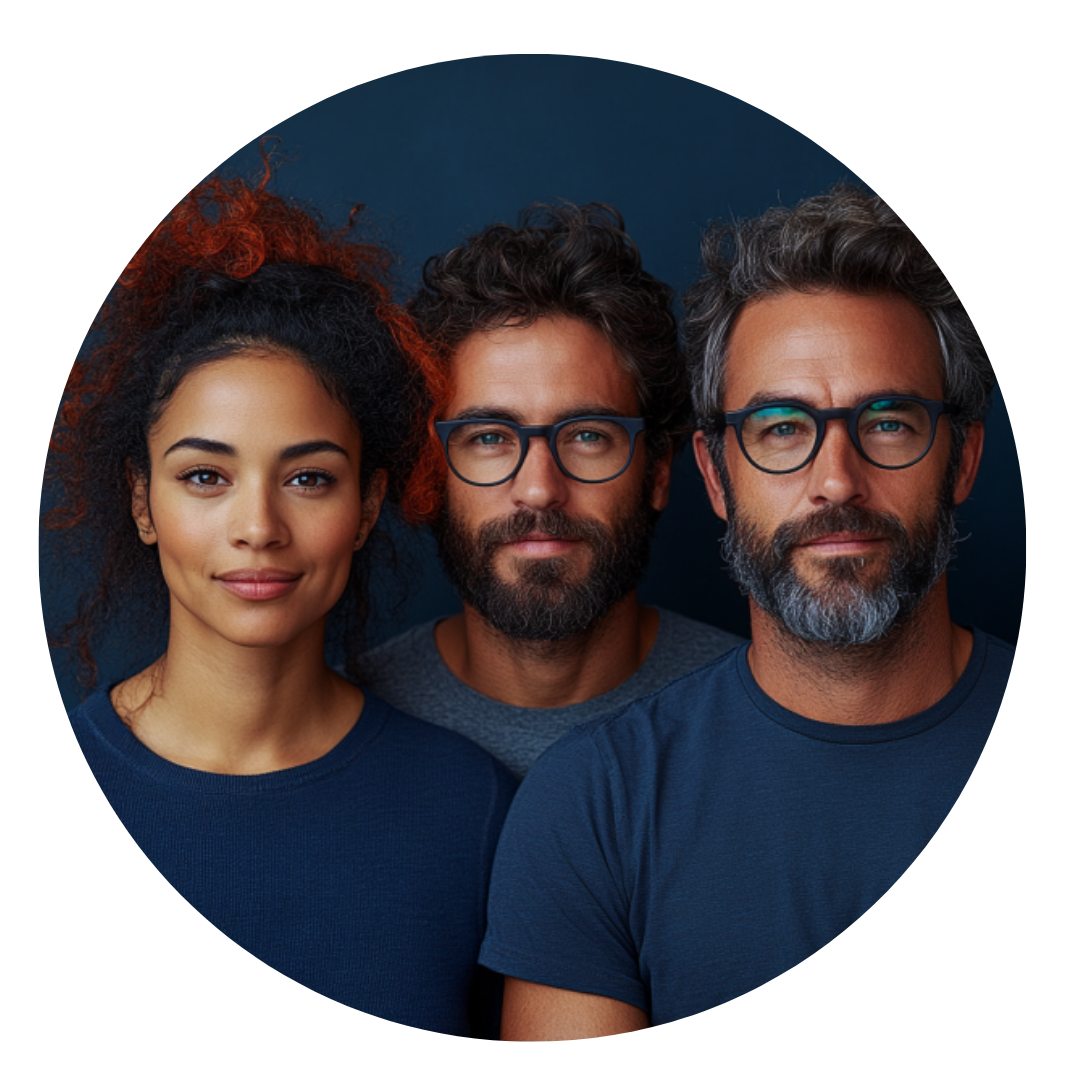The Asimov Sacrilege: Tech Bros Co-opt a Master's Legacy
Isaac Asimov would be spinning in his grave fast enough to power a small data center. The legendary science fiction author who gave us the Three Laws...
5 min read
 Writing Team
:
Jul 7, 2025 9:57:31 AM
Writing Team
:
Jul 7, 2025 9:57:31 AM
-Jul-07-2025-01-53-56-9586-PM.png)
The latest controversy surrounding Huawei's Pangu Pro MoE model isn't just another tech industry spat—it's a preview of the intellectual property nightmare that's about to consume every business operating in the AI age. When a research group called HonestAGI accused Huawei of "upcycling" Alibaba's Qwen 2.5 model, claiming an "extraordinary correlation" of 0.927 between the two systems, they exposed a fundamental truth that no one wants to acknowledge: proving AI plagiarism is virtually impossible, and that impossibility is about to become every company's worst nightmare.
Huawei's Noah Ark Lab issued the predictable denial, claiming their model was "not based on incremental training of other manufacturers' models" and emphasizing their "key innovations in architecture design and technical features." But here's the problem: in the world of AI model development, such denials are essentially meaningless. The very nature of how these systems are built makes intellectual property theft not just possible, but practically undetectable.
The Fingerprinting Illusion
HonestAGI's methodology sounds impressively scientific—they developed what they call "intrinsic fingerprints" for large language models, using standard deviation calculations across parameter matrices to create unique signatures. The researchers pointed to nearly identical patterns in QKV bias projections and attention LayerNorm weights, even discovering a Qwen license file within Pangu's official code repository. They concluded that "all of these points are coincidences? Probably not."
But this is where the skepticism should begin, not end. The lead developer of Pangu's team fired back, claiming that models with different layers produced highly similar results under HonestAGI's evaluation methods, suggesting the methodology itself is "extremely unscientific." When your plagiarism detection system can't distinguish between genuinely different models, what exactly are you detecting?
The uncomfortable truth is that AI model architectures, especially those built on similar transformer foundations, will naturally exhibit similarities. When every major AI company is working from the same basic architectural blueprints, published research papers, and open-source frameworks, the line between legitimate influence and outright theft becomes impossibly blurred.
For businesses, this controversy represents a preview of a much larger problem. The ICT sector now faces industrial-scale intellectual property challenges that traditional legal frameworks simply cannot address. When T.S. Eliot observed that "good authors borrow, great authors steal," he wasn't anticipating a world where machines could process and synthesize millions of works simultaneously, creating plausible deniability for even the most blatant appropriation.
The mathematical complexity of modern AI models creates perfect cover for intellectual property theft. With billions of parameters and training processes that can legitimately produce similar outputs from different starting points, proving intentional copying becomes a herculean task. Even if HonestAGI's fingerprinting method were scientifically sound—which is questionable—it would still face the fundamental challenge of distinguishing between convergent evolution and deliberate copying.
Consider the business ramifications: If companies can't definitively prove when their AI models have been stolen, how can they protect multi-billion-dollar investments in research and development? The answer, increasingly, is that they can't. We're entering an era where the most valuable intellectual property—the weights and architectures of AI models—can be appropriated with near-perfect legal immunity.
The plagiarism challenge extends far beyond model architecture. AI systems are trained on vast datasets scraped from the internet, often without explicit permission or attribution. When these systems generate content, they're essentially recombining patterns learned from copyrighted material. The question isn't whether AI models plagiarize—it's whether the concept of plagiarism has any meaning in this context.
The proliferation of generative AI tools has opened the door to misuse by learners, with a recent survey finding that 51 percent of students would continue to use generative AI tools even if such tools were prohibited by their instructors or institutions. If we can't even prevent students from using AI to cheat on assignments, how can we expect to prevent corporations from stealing each other's models?
The detection tools themselves are fundamentally flawed. AI-based plagiarism detection technologies can analyze text and compare it to sources in databases to find instances of plagiarism, but they suffer from significant accuracy problems. Stanford researchers found that more than half of TOEFL essays were incorrectly classified as AI-generated by detection tools, highlighting the bias problems inherent in these systems.
Courts are currently trying to establish how intellectual property laws should be applied to generative AI, but the legal system is moving at glacial pace compared to technological development. The fundamental challenge is that AI models can produce outputs that are functionally identical to training data while claiming they're generating "original" content through pattern recognition.
This creates a legal gray area that sophisticated actors can exploit indefinitely. Companies can claim their models were trained independently, point to differences in training data or methodologies, and argue that any similarities are coincidental. Given the complexity of proving otherwise, such claims will often be legally sufficient even when they're obviously false.
The business world is already adapting to this reality. Companies are developing internal carbon pricing systems and procurement practices focused on Scope 3 emissions, but there's no equivalent framework for intellectual property protection in the AI age. The result is a free-for-all where the most aggressive appropriators will have significant competitive advantages.
Various efforts are underway to address these challenges through technical solutions like watermarking AI-generated content, but these approaches face insurmountable practical obstacles. For watermarking to be effective, it would need to be required by law and implemented universally—conditions that are politically and technically unrealistic.
Even if watermarking were mandated, the spread of deepfake technology demonstrates the difficulty of policing such rules. There are practical challenges to watermarking text in particular, and sophisticated actors will always find ways to circumvent detection systems.
The more fundamental problem is that watermarking addresses symptoms rather than causes. It might help identify when content was generated by AI, but it doesn't solve the underlying issue of training data appropriation or model architecture theft.
The Huawei controversy illustrates how intellectual property uncertainty is becoming a competitive weapon. By making plagiarism accusations difficult to prove or disprove, companies can weaponize uncertainty to damage competitors or deflect from their own practices. HonestAGI's research, regardless of its scientific validity, succeeded in creating negative publicity for Huawei and raising questions about the legitimacy of Chinese AI development.
This dynamic incentivizes a race to the bottom. Companies that respect intellectual property rights will be disadvantaged against those willing to appropriate others' work. The businesses that succeed will be those that most effectively exploit legal gray areas while maintaining plausible deniability.
The implications extend beyond individual companies to entire sectors. If AI model theft becomes normalized, it will fundamentally alter the economics of AI research and development. Why invest billions in original research when you can appropriate competitors' work at minimal cost and legal risk?
The Huawei-Alibaba controversy exposes the inadequacy of current approaches to AI intellectual property protection. Traditional plagiarism detection methods are failing, legal frameworks are outdated, and technical solutions are impractical. Meanwhile, the competitive pressures driving AI development are intensifying.
For businesses, this means operating in an environment where intellectual property theft is not just possible but profitable. The companies that acknowledge this reality and adapt accordingly will have significant advantages over those that continue to operate under traditional assumptions about intellectual property protection.
The uncomfortable truth is that we're entering an era where the concept of intellectual property may need to be fundamentally reconsidered. The current framework was designed for a world where copying required significant effort and could be easily detected. In the age of AI, copying is effortless and detection is nearly impossible.
Huawei's denial of plagiarism allegations may be entirely truthful, but it's also irrelevant. In a world where proving AI plagiarism is virtually impossible, the distinction between legitimate development and intellectual property theft becomes meaningless. The businesses that thrive will be those that recognize this reality and position themselves accordingly.
The AI revolution isn't just transforming how we create and consume content—it's making intellectual property protection obsolete. Companies that fail to adapt to this new reality will find themselves at a permanent disadvantage against competitors who embrace the new rules of the game.
Need to protect your business in the age of AI uncertainty? At Winsome Marketing, our growth experts help companies navigate the complex landscape of artificial intelligence, intellectual property, and competitive strategy. We develop AI-powered marketing solutions that deliver results while managing risk. Contact our team today to discuss how we can help your business thrive in the new AI economy.
-1.png)
Isaac Asimov would be spinning in his grave fast enough to power a small data center. The legendary science fiction author who gave us the Three Laws...

1 min read
There's nothing quite like watching a $500 billion company face-plant in real time. Last Thursday, Sam Altman promised us a "legitimate PhD-level...
-3.png)
Let's talk about the most expensive Happy Meal in history. McDonald's AI hiring bot just served up 64 million job applicants' personal data to anyone...